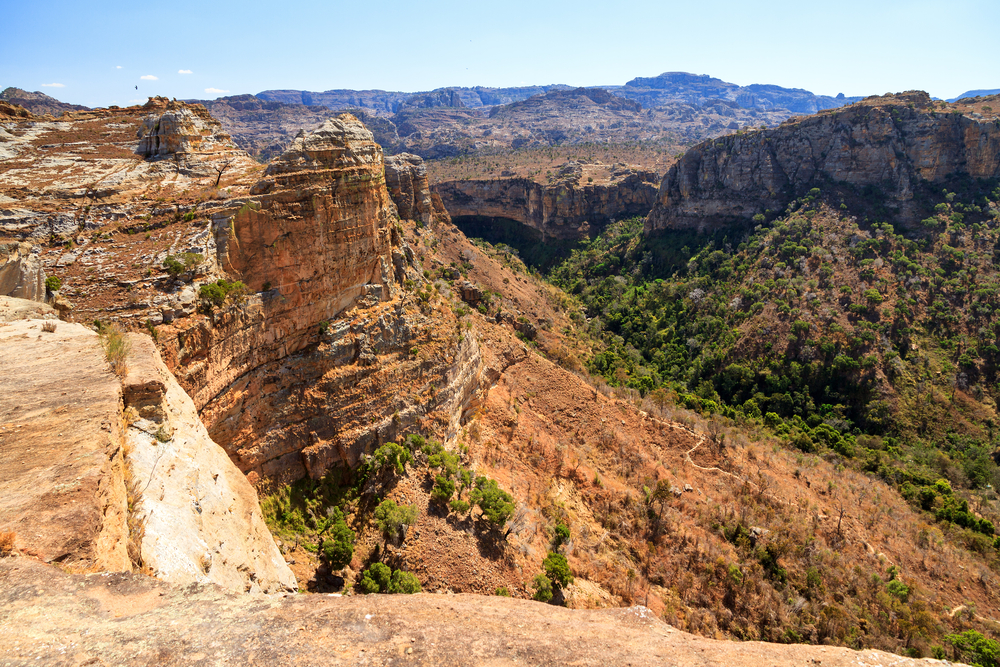Analamazaotra Overview
Analamazaotra National Park, locally known as “Parc National d’Analamazaotra,” is one of Madagascar’s most renowned protected areas, located in the eastern region of the island near the town of Andasibe. Often associated with the nearby Andasibe-Mantadia National Park, Analamazaotra is particularly famous for its unique biodiversity and as a critical refuge for Madagascar’s iconic lemurs. Encompassing lush rainforests and rolling mountain terrain, the park offers visitors a glimpse into the extraordinary natural world that has made Madagascar a global hotspot for biodiversity.
The terrain of Analamazaotra National Park is a combination of steep hills, deep valleys, and dense lowland and montane rainforests. The park’s elevation creates a moist and cool climate that supports a rich diversity of plant life. The forest canopy is dominated by towering hardwoods such as rosewood and ebony, interspersed with palms, orchids, and ferns that thrive in the humid environment. Streams and small waterfalls meander through the landscape, adding to its scenic beauty and providing essential habitats for aquatic species.
Analamazaotra is most famous for being home to the indri, the largest living lemur species, known for its haunting, melodic calls that echo through the forest. In addition to the indri, the park is home to other lemur species such as the diademed sifaka, common brown lemur, and bamboo lemur. Birdwatchers will find the park a paradise, with species like the Madagascar wagtail, Madagascar crested ibis, and the rare velvet asity. Reptiles and amphibians, including the leaf-tailed gecko and various colorful frogs, add to the park’s vibrant biodiversity.
Visitors to Analamazaotra National Park can engage in a range of activities designed to showcase its natural wonders. Guided treks through the forest allow for close encounters with lemurs and other wildlife, while birdwatching excursions cater to avid ornithologists. The park’s well-maintained trails vary in difficulty, making it accessible for casual hikers and seasoned adventurers alike. Cultural tours that highlight the local Malagasy traditions and their harmonious relationship with the forest further enrich the experience.
Despite its global recognition, Analamazaotra faces challenges such as deforestation, habitat fragmentation, and pressures from nearby agricultural activities. Conservation efforts, led by Madagascar National Parks in collaboration with local and international partners, focus on reforestation projects, anti-poaching measures, and environmental education. Community-based initiatives aim to involve local populations in sustainable tourism and conservation, ensuring that the park’s benefits are shared and its resources protected.
Analamazaotra National Park stands as a symbol of Madagascar’s incredible natural heritage. Its lush forests, unique wildlife, and cultural importance make it a vital destination for eco-tourists and researchers alike. Protecting this precious ecosystem ensures the survival of its endemic species and reinforces the island’s reputation as one of the world’s most extraordinary natural landscapes.















































































